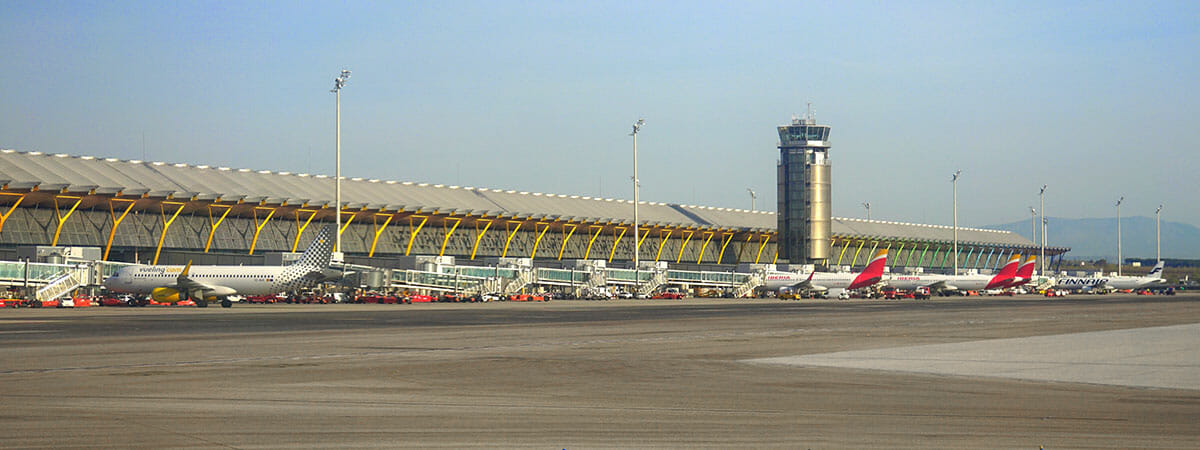Millions of passengers travel around the world every day, and the thing that matters most to them is to have a travel experience that is as efficient, comfortable and safe as possible. We may not notice it sometimes, but the reality is that airports are not exempt from emergency situations that they have to be prepared for. Having procedures in place for these situations is not only a legal requirement, but a moral obligation to the users and workers in these facilities.
Airport safety and security are ever present in the activities that take place there, and rely on planning, prevention and protection.
All Self-Protection Plans begin with a detailed description of any potentially dangerous situations that can lead to an emergency situation at the airport and its facilities, such that they can be prevented as a first resort, or dealt with as a second resort.
An emergency or self-protection plan should define what may be referred to as the three “Ps”; Planning, Prevention and Protection.
Planning is the phase to search for and analyse those situations that can lead to an emergency situation.
Once potentially dangerous situations are identified, the plan moves to the Prevention phase, which seeks to prevent this risk situation from materialising. This is the most favourable and desired state, especially when talking about busy public areas like airports. These are environments with an extremely high occupation density and where many activities take place simultaneously.
Protection is the last, and least desired, phase. It is activated when the emergency situation materialises, which in turn activates the procedures with their respective material and human resources, both internal and external to the airport. This phase seeks to control the emergency in its initial stages by ensuring a prompt and effective response that neutralises the emergency as quickly as possible. The goal is to reduce harm to people and property, as well as potential collateral damage that could partially or completely paralyse operations at the airport.
Many will ask themselves the purpose of emergency responders, such as civil protection, firefighters, medical personnel, law enforcement and others. The answer is simple: Emergency planning is a legal obligation for every business activity, which is required by law to respond to its own emergencies. However, the point can be reached where, due to the lack of internal resources or the gravity or scope of the emergency, external emergency personnel may be required to respond and intervene. It is important to remember that external resources are limited when considering the number of business activities in operation. Another point to consider is that their response time will be longer, increasing the likelihood of the emergency advancing to more serious stages.
Any emergency or self-protection plan has to be designed with two premises in mind: objective and subjective. The objective premise is conditioned by the various applicable laws involved. The subjective premise is conditioned either by the fact that the applicable law not address certain aspects specific to the emergency, leaving them to the discretion of the specialist writing it, or by the psychological aspect. The latter is fundamental to understanding how humans – both the responders involved and the users – deal with emergency situations. This factor is sometimes forgotten when drafting the procedures of an Emergency or Self-Protection Plan, when the emergency is detached from human nature.
There are two aspects that are of particular importance as part of an airport’s self-protection plan. The first has to do with evacuation procedures, which are critical due to the high number of passengers, workers and other users. The second is related to all the companies that operate inside airport facilities. Let’s start with the first aspect.
Evacuation is part of our main goal, which is to save lives. To make it efficient, the exits and escape routes must be fully operational and properly marked; in addition, the evacuation procedures have to be precisely defined and second nature to the members of the emergency and evacuation team. Two of the objectives that evacuation procedures and the responders involved must avoid are the stampede effect and the entrapment effect.
The second aspect concerns the so-called “tenants”, meaning any company that carries out its activity within airport facilities. These can range from a small shop or business to a large food service area, as well as the offices of an airline company, handling agent or service company. This second aspect coincides with the greatest source of misunderstandings when these companies declare themselves “included” in the airport’s self-protection plan. There is no such concept of inclusion, since all responsibility would then lie directly with the airport, which is not the case. Therefore, each tenant must have its own emergency or self-protection plan, based on the intrinsic risk level of its own activity.
In the case of Spain, the Emergency Plan will be defined by Article 20 of Occupational Risk Prevention Law 31/95, usually defined for low-risk activities, and the Self-Protection Plan will be defined either by Royal Decree 393/2007, or by another regional or local law that takes into account emergencies for high-risk activities. Regardless of whether the tenant has an emergency plan or a self-protection plan, these must be integrated into the airport’s Self-Protection Plan. Integrating means acting together, that is, your activity in my work centre. As mentioned earlier, each activity has to account for its own emergencies, regardless of whether it shares the same work centre, in this case an airport.
In addition to the above, we must not forget that an airport Self-Protection Plan must include aviation emergencies, this being its main activity. The risk of attacks and other security threats also has to be considered, due to the media impact and social effect they could have. Last but not least, a self-protection plan must also include potential natural risks that could affect the safety of the airport complex.
The aim of all this is, as always, for passengers to be able to travel comfortably and efficiently, while letting airport companies and professionals carry on with their work normally, and to do so in a setting with the proper means, protocols and circumstances for this to happen.

Other posts that may interest to you…
- Airport Certification Process, by Iván Bardón
- More Healthy Flights, by Francisco García
- Biosecurity, air transport and the impact of COVID19, by Rafael Muga
- Aeronautical safety studies, by Iván Bardón
- Air traffic controllers, by Antonio Rodríguez Laiz


